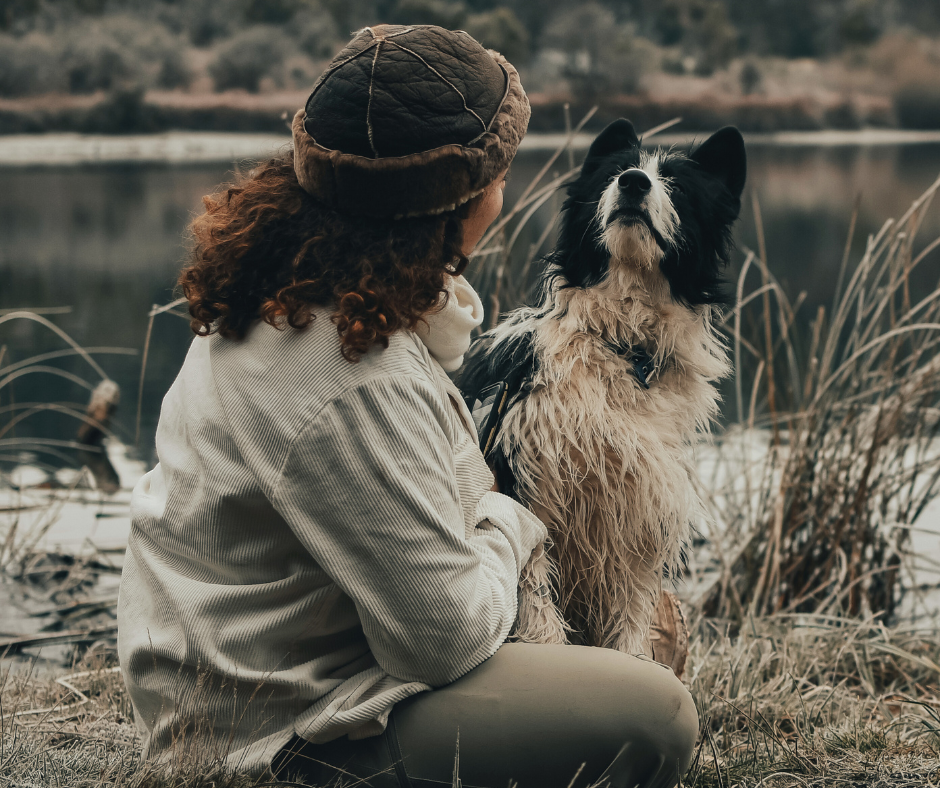

How to Prevent Separation Anxiety in Dogs When Returning from Remote Work
Summary
Reflection Questions
Journal Prompt
Many of us have since returned to our offices or studios since the COVID-19 pandemic drew to a close. Some of us adopted a hybrid arrangement, while others left remote work behind entirely. The shift from remote work to a traditional in-office work setting, particularly following extended periods of remote work, can have far-reaching consequences, not only for employees but also for their canine companions. Dogs, often accustomed to the constant presence of their owners, may struggle with the abrupt change in routine and prolonged periods of solitude. As pet parents, many of us have asked vets how to prevent separation anxiety in dogs under our care. According to this resource from the University of Melbourne, “Separation anxiety is thought to affect one in every four to six dogs.” Reading stats like that can make the prospect of returning to in-person work feel awful. In this article, we explore the implications of transitioning back to in-office work for dogs and outline proactive measures you can take to mitigate dog separation anxiety. We hope this will help you ensure the well-being of your beloved four-legged friends during such a transformative period.
Understanding Separation Anxiety in Dogs
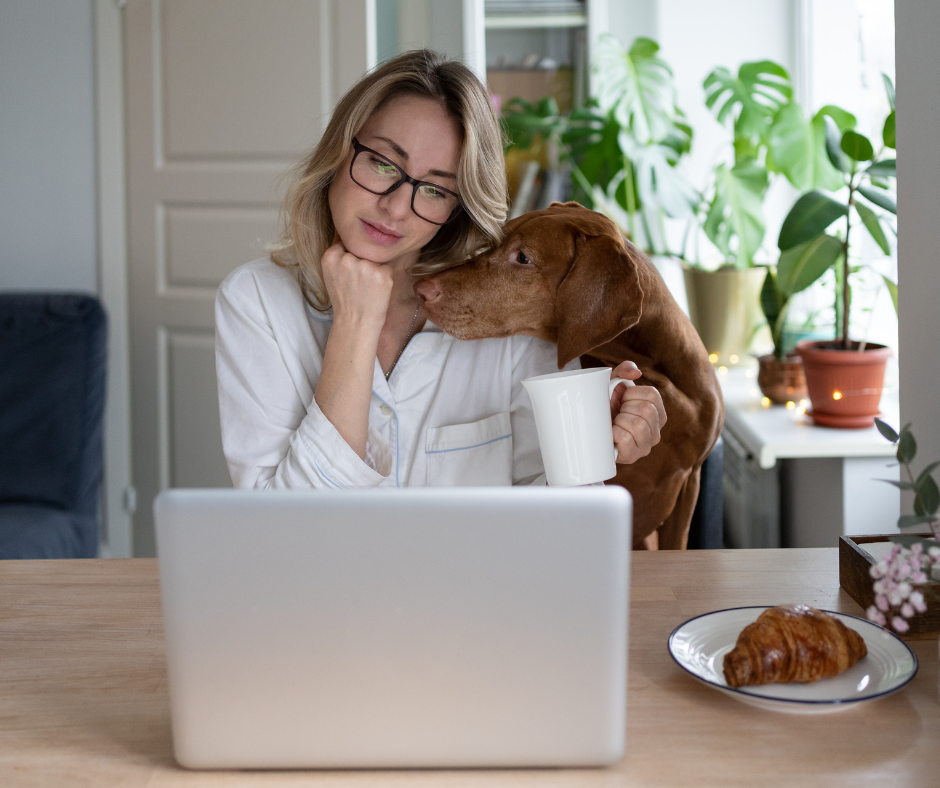

Separation anxiety in dogs is characterized by a state of distress and anxious behavior exhibited when a dog is separated from its owner or caregivers. According to this paper published in the Journal of Veterinary Behavior, “Separation anxiety is often associated with behaviors like excessive barking, destruction, and distress when the owner leaves.”
Other common signs of separation anxiety include urination or defecation indoors and dangerous attempts to escape confinement. Understanding these symptoms is crucial for identifying and addressing separation anxiety effectively.
Several factors contribute to the development of separation anxiety in dogs. A history of frequent changes in living situations, traumatic experiences, or a lack of socialization during puppyhood can increase the likelihood of separation anxiety. Additionally, certain breeds and individual temperament differences may make some dogs more predisposed to this condition. Recognizing these contributing factors can aid in devising tailored strategies for prevention.
A dog’s routine and attachment to its owner play significant roles in the manifestation of separation anxiety. Dogs are creatures of habit and thrive on predictable routines. Sudden changes in their daily schedule, such as transitioning from constant human presence to solitude, can trigger anxiety.
Dogs that have formed strong attachments to their owners may experience heightened distress when separated. Understanding the interplay between routine, attachment, and separation anxiety is essential for devising effective prevention strategies.
Separation Anxiety at Different Ages


Separation anxiety can occur in both puppies and adult dogs, but it is often more prevalent in puppies. However, it can occur at different stages of a dog’s life, especially if there is a sudden absence of a family member or dog sitter. Of course, one dog might react differently than other dogs. Individual experiences play an enormous role in establishing anxious behaviors in dogs. Let’s take a closer look at the prevalence of separation anxiety in different age groups, from young dogs to older dogs.
Puppies
Separation anxiety is relatively common in puppies, especially during the early months of their lives. This can be attributed to several factors, including the puppy’s attachment to their owner, lack of experience being alone, and the developmental stages they are going through. Puppies are still learning about their environment and may not have developed coping strategies for being separated from their owners.
Adolescent Dogs
Dogs in the adolescent stage (typically around 6 months to 2 years of age) may also experience separation anxiety. This can be a challenging period as dogs go through hormonal changes and may test boundaries, which can contribute to anxiety when left alone.
Adult Dogs
Separation anxiety can persist into adulthood or develop in adult dogs who have not previously exhibited these behaviors. Adult dogs may develop separation anxiety due to changes in their living situation, traumatic experiences, or disruptions to their routines. It can also occur when an adult dog is rehomed or adopted into a new environment.
While separation anxiety is more commonly associated with puppies, it is essential to recognize that it can affect dogs of all ages. Early detection and appropriate intervention, regardless of the dog’s age, are crucial to addressing separation anxiety effectively and improving the dog’s overall well-being. If you suspect that your dog, whether a puppy or an adult, is experiencing separation anxiety, it’s advisable to consult with a veterinarian, a certified applied animal behaviorist, or certified professional dog trainer for guidance and support.
How Do Veterinarians and Veterinary Behaviorists Treat Separation Anxiety?


Vets and veterinary behaviorists play a crucial role in treating separation anxiety in dogs through a combination of medical and behavioral approaches. Let’s walk through the process.
Initial Assessment: The first step is to conduct a thorough assessment of the dog’s behavior and medical history. Vets and behaviorists will gather information about the dog’s age, breed, previous experiences, and any recent changes in the household or routine that may have triggered the anxiety.
Medical Evaluation: Vets will rule out any underlying medical conditions that could be contributing to the dog’s symptoms. Certain medical issues, such as a urinary tract infection or gastrointestinal problems, can sometimes manifest as anxiety-like behavior.
Behavioral Diagnosis: Veterinary behaviorists are experts in diagnosing behavioral issues in dogs. They use their knowledge to differentiate between anxiety-related behaviors and other behavioral problems, ensuring an accurate diagnosis.
Behavior Modification: Behaviorists will develop a tailored behavior modification plan based on the severity of the dog’s separation anxiety. This plan may include techniques like desensitization and counterconditioning, which gradually expose the dog to the anxiety-inducing situation while rewarding calm behavior.
Medication: In some cases, medication may be recommended to help manage the dog’s anxiety. Medications like selective serotonin reuptake inhibitors (SSRIs) or anti-anxiety medication can be prescribed by veterinarians to complement behavior modification.
Environmental Enrichment: Vets and behaviorists often suggest environmental changes to reduce anxiety triggers. This may involve creating a safe and comfortable space for the dog, using interactive toys, or providing mental stimulation to keep the dog occupied during alone time.
Training and Socialization: Vets and behaviorists may recommend obedience training sessions and socialization to boost the dog’s confidence and reduce anxiety. Proper training can help improve the dog’s overall behavior and responsiveness to commands.
Owner Education: Educating dog owners about separation anxiety is a crucial part of the process. Vets and behaviorists provide guidance on implementing behavior modification techniques, maintaining consistency, and recognizing signs of improvement or regression.
Follow-Up and Monitoring: Regular follow-up appointments are essential to track the dog’s progress and make any necessary adjustments to the treatment plan. Behaviorists work closely with dog owners to ensure that the strategies are effective and sustainable.
Referrals: In severe cases or when specialized expertise is required, vets and behaviorists may refer clients to each other or to a board-certified veterinary behaviorist for more intensive treatment.
Overall, the collaboration between vets and veterinary behaviorists helps provide a comprehensive approach to addressing separation anxiety in dogs, focusing on both the medical and behavioral aspects of the condition to improve the dog’s quality of life and alleviate their distress.
Preparing for the Transition from Remote to In-Office Work
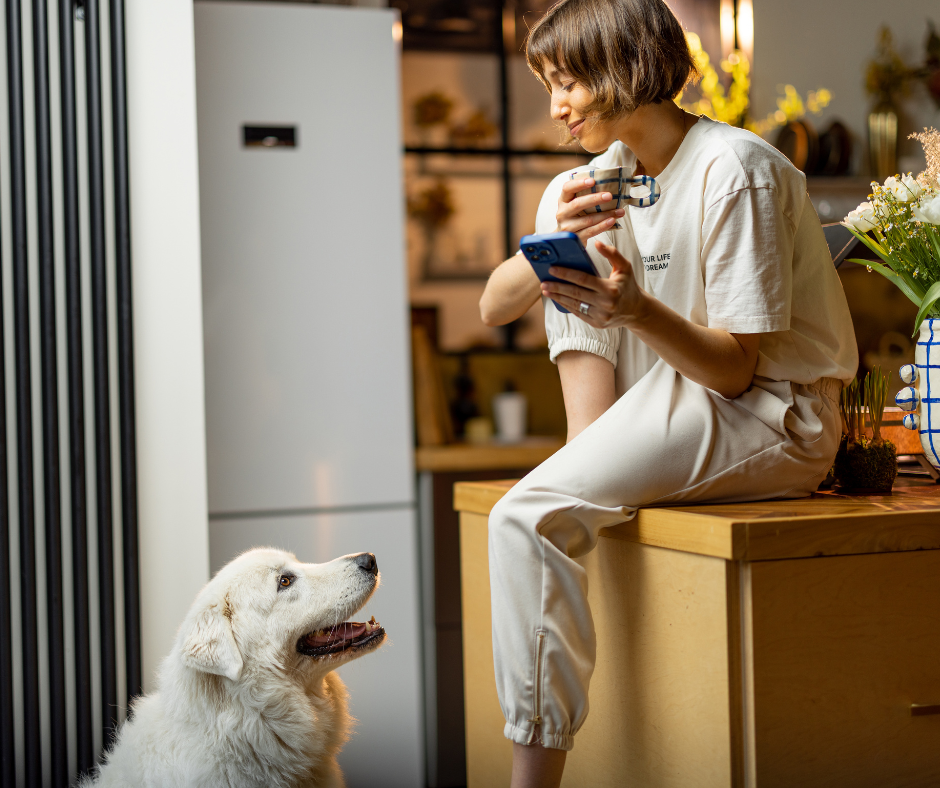

As you prepare for the transition from remote work to in-office work, it’s crucial to ease your dog into the new routines. Abrupt changes in your schedule can be unsettling for your canine companion, leading to anxiety. Start by simulating short periods of separation, even when you’re still working remotely. Leave the room or the house for a few minutes at a time, gradually extending the duration as your dog becomes more comfortable. This gradual adjustment helps your dog relearn that being alone is a normal part of their routine.
Identifying Potential Triggers for Anxiety
Recognizing the specific triggers that contribute to your dog’s separation anxiety is a key step in addressing the issue. Pay close attention to cues that signal your departure, such as grabbing your keys, putting on your shoes, or even picking up your work bag. These cues can trigger puppy separation anxiety because they associate them with your leaving.
By identifying these triggers, you can work on desensitizing your dog to them. For example, you can pick up your keys multiple times a day without actually leaving, gradually reducing the anxiety response associated with this action.
Creating a Comfortable and Safe Space for Your Dog
Dogs often find comfort in having a designated space of their own. As you transition back to in-office work, ensure your dog has a comfortable and safe area where they can retreat when you’re not at home. This space should include their bed, favorite toys, and access to water. Familiarity with their environment can provide a sense of security, reducing anxiety when they’re left alone.
Introduction to Positive Associations with Departure Cues
Changing your dog’s perception of departure cues is an effective way to mitigate separation anxiety. Instead of these cues triggering distress, you can turn them into positive associations. For example, when you pick up your keys, offer your dog a special treat or a new toy. Over time, your dog will come to associate these cues with enjoyable experiences. This conditioning can help alleviate anxiety as your dog learns that your departures are not something to fear but rather an opportunity for rewards and fun.
Strategies for Preventing Separation Anxiety


Training plays a crucial role in preventing separation anxiety. Gradual desensitization to departures is an effective method. This involves leaving your dog alone for short periods initially, gradually increasing the duration over time.
Rewarding calm behavior when you leave and return can reinforce positive associations with your departures. Additionally, practicing “fake departures” without actually leaving can help reduce anxiety. Training commands like “stay” and “settle” can be valuable tools to teach your dog self-control.
Exercise and Mental Stimulation
Regular exercise and mental stimulation are essential for a dog’s well-being and can aid in preventing separation anxiety. Ensure your dog receives adequate physical activity and mental challenges daily. If necessary, enlist the help of a dog walker. A tired dog is often a calmer dog when left alone. Interactive toys, puzzle feeders, and obedience training sessions can engage your dog’s mind and help reduce anxiety.
Providing Engaging Toys and Puzzles
Offering your dog a variety of engaging puzzle toys can keep them occupied while you’re away. A puzzle toy stuffed with treats or one that has hidden compartments for food can be particularly helpful. These toys not only provide mental stimulation but also create positive associations with your absence as your dog associates it with fun activities and rewards.
Seeking Professional Help if Needed


If your dog’s separation anxiety persists or worsens despite your efforts, seeking professional help is advisable. Veterinarians and certified veterinary behaviorists can assess your dog’s condition and provide guidance tailored to your specific situation.
They may recommend behavior modification techniques, medications, or a combination of both to address severe cases of separation anxiety. Consulting a professional can significantly improve your dog’s chances of overcoming this challenging issue.
By incorporating these strategies into your routine, you can take proactive steps to prevent separation anxiety in your dog when transitioning from remote work to in-office work, ensuring a smoother adjustment for both you and your canine companion.
Implementing Changes at the Office
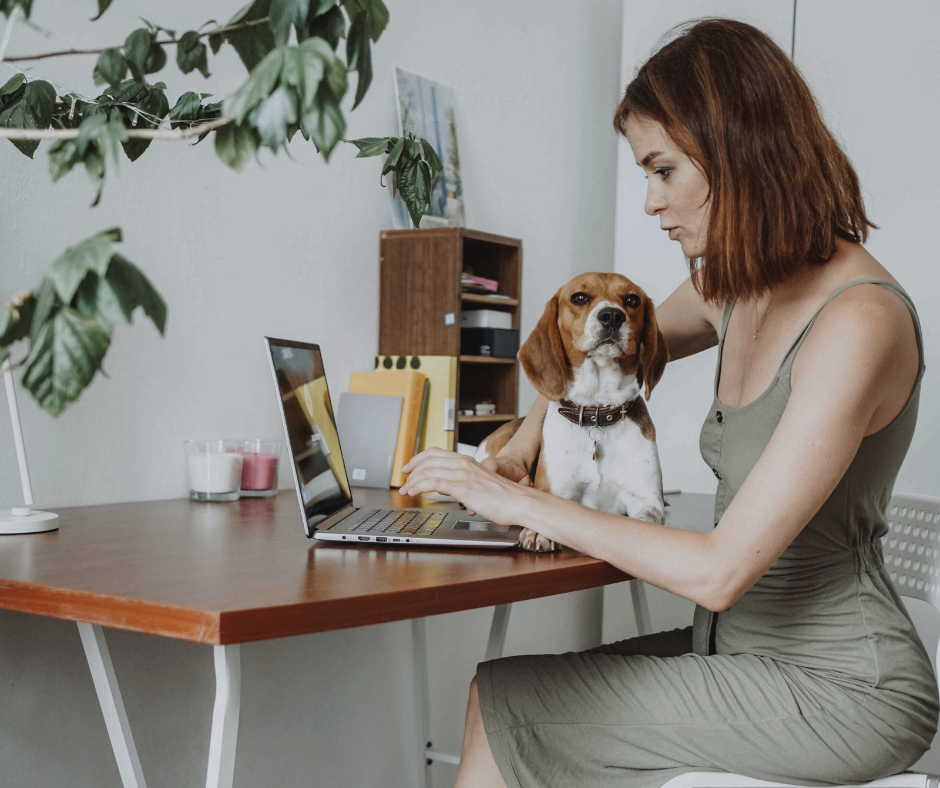

Crate training and providing interactive toys can make a big difference, but so can bringing your dog to work with you every once in a while. Just remember that disrupting your dog’s routine might have unintended consequences next time you leave him or her at home when you head off to the office. If you want to bring your dog to work, here’s what we suggest.
Discuss Dog-Friendly Office Policies with Employers
Before bringing your dog to the office, it’s essential to have a candid discussion with your employer or HR department about existing policies and the feasibility of having dogs in the workplace. Be prepared to address concerns, establish clear guidelines, and ensure your dog’s presence aligns with company regulations. If your workplace doesn’t have a dog-friendly policy, consider proposing a trial period or a pilot program to assess its viability.
Establish a Designated Area for the Dog at the Workplace
Creating a designated space for your dog within the office is crucial to maintaining a productive and harmonious work environment. This area should be comfortable, equipped with your dog’s necessities, and located in a non-disruptive location. Ensure that it doesn’t interfere with the workflow of colleagues and respects any potential allergies or fears others may have related to dogs.
Maintain Communication with Colleagues Regarding the Dog’s Presence
Open communication with your colleagues is key to ensuring a positive experience for everyone in the office. Inform your coworkers about your dog’s presence in advance, respecting any allergies, phobias, or discomfort they may have. Encourage your colleagues to voice any concerns or issues they may encounter, and be proactive in addressing these concerns. Establishing a sense of teamwork and mutual respect can help create a dog-friendly office environment that benefits all employees.
The Importance of Maintaining Consistency
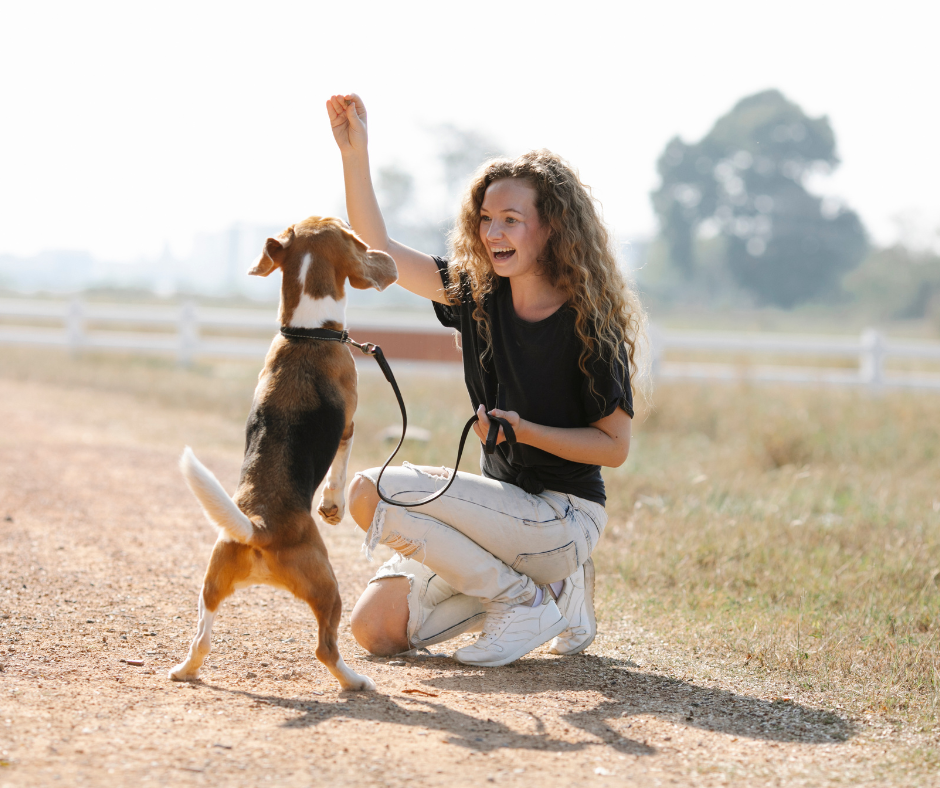

Consistency in your dog’s daily routines is essential not only during the transition but also after you’ve returned to in-office work. Disrupting his or her routine could result in puppy training setbacks. After all, dogs thrive on predictability. It’s crucial to uphold their established routines for feeding, exercise, and rest. Continue to provide them with the same level of attention and care you did during remote work to prevent any abrupt changes that could lead to anxiety. Consistency helps your dog feel secure and minimizes the stress of the transition.
Even with careful preparation, each dog may react differently to the transition back to the office. Regularly monitor your dog’s behavior for signs of distress or separation anxiety. If you notice any concerning changes, such as excessive whining, destructive behavior, or house soiling, it’s essential to address them promptly. Be prepared to adjust your strategies or seek professional guidance if needed. Consistent observation and adaptability are key to ensuring your dog’s well-being as you navigate the challenges of returning to in-office work.
Final Thoughts on Dog Separation Anxiety
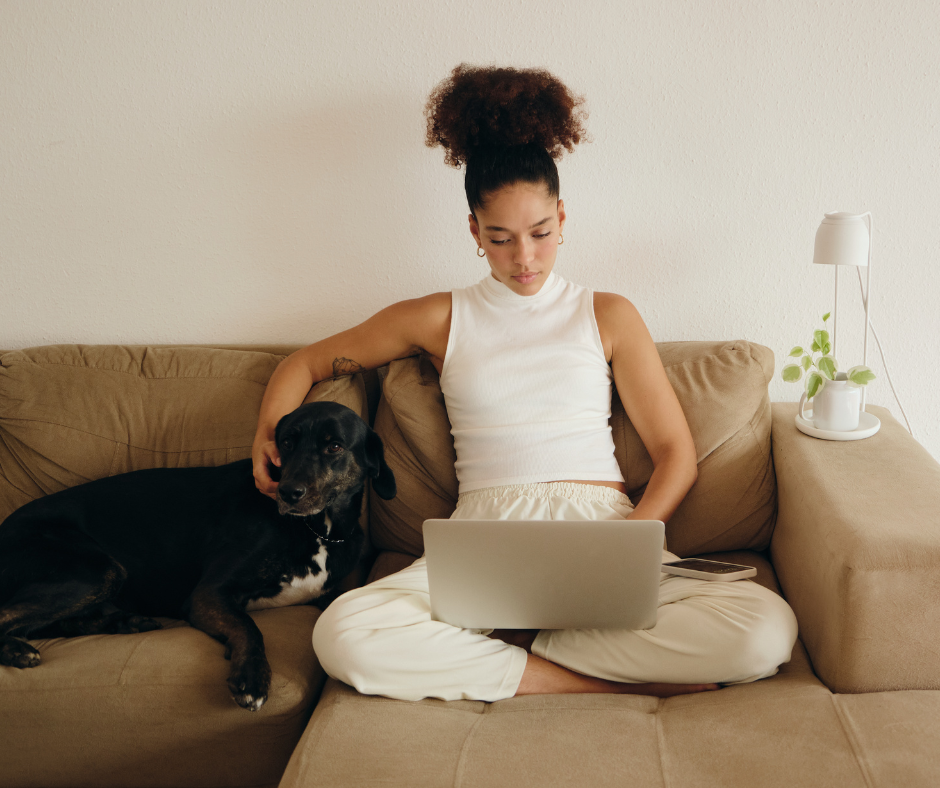

By understanding and proactively addressing separation anxiety in your furry friend, we hope you will enjoy a harmonious return to the workplace. Patience and understanding during the adjustment period are paramount, as it may take time for dogs to adapt to the new routine. We also encourage you to promote a supportive and inclusive environment for colleagues and their four-legged friends. As we strive for a healthy work-life dynamic, let us not forget the essential role our canine companions play in our lives, and let their well-being be a priority as we navigate the changing landscapes of work.








